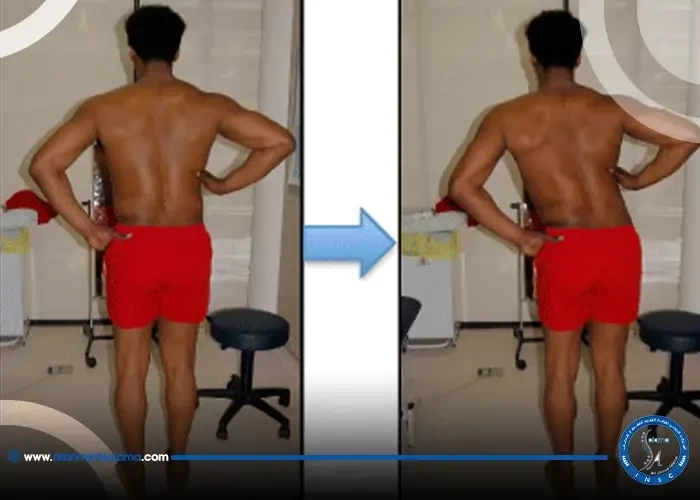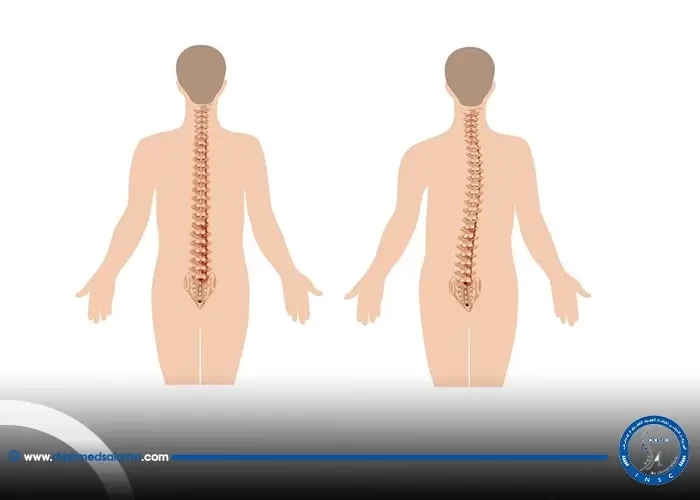Nasr City, 52 El Tayaran Street, in front of the Health Insurance Hospital

6 of the most common risks of spine surgery.

The spine is one of the most important parts of the human body, responsible for providing structural support and allowing us to perform a variety of movements. However, with this importance comes risks – there are several common dangers associated with spinal procedures that patients should be aware of. In today's blog, we'll be discussing six of the most prevalent risks associated with spinal surgery. Whether you're facing an upcoming procedure or simply want to increase your knowledge about spinal health, read on to learn more about how to safeguard yourself against these potential hazards.
Introduction to spinal injuries and conditions requiring surgery
Introduction to spinal injuries and conditions requiring surgery is an essential part of understanding the risks associated with spine surgeries. As previously mentioned, spinal surgeries are among the most dangerous surgeries that require extreme caution, experience, and high medical skill. The spine is a complex and sensitive part of the body that plays a pivotal role in our daily functions. It is no wonder that injuries to the spine can be life-changing, and often require surgical intervention. Understanding the structure and function of the spine, as well as common causes of spinal stenosis and lower back pain, highlights the necessity of spinal surgeries. Chiropractors play a significant role in treating common spinal problems, but when surgery is necessary, patients should be informed of potential complications and recovery expectations. Neurosurgeons and spine specialists are trained professionals who are responsible for diagnosing and treating spinal injuries and conditions, while lumbar vertebrae fixation may be necessary for stability and support. By understanding these concepts, patients can make informed decisions when considering surgery for spinal injuries and conditions.
Understanding the structure and function of the spine
Having a basic understanding of the structure and function of the spine is important when considering spinal surgeries and treatments. The spine is made up of a series of irregular bones called vertebrae, which differ in shape and size depending on their location in the spine. Walking upright puts significant stress on the joints in the lumbar spine, which can lead to degenerative changes such as herniated discs, slipped vertebrae, or stenosis of the nerve canal. Common causes of spinal stenosis include wear-and-tear changes in the spine associated with arthritis. During lumbar vertebrae fixation surgery, two or more vertebrae are fused together to stabilize and prevent them from moving. Patients should be aware of the potential side effects and complications of spinal surgeries and should have reasonable expectations for their recovery time. Neurosurgeons and spine specialists play a critical role in the treatment of spinal injuries and conditions, and chiropractic care can also be an effective alternative to surgical intervention for many patients.
Common causes of spinal stenosis
Spinal stenosis is a common medical condition that affects both younger and older adults. Among the most common causes of spinal stenosis is wear-and-tear changes in the spine, associated with osteoporosis and arthritis. This narrowing of the spinal canal or foramen between the vertebrae can put pressure on the spinal cord or nerve roots, leading to painful symptoms like numbness, tingling, and weakness in various parts of the body. While lumbar spinal stenosis is a frequent source of leg and back pain, there are also other factors that can contribute to this condition, such as bulging or herniated discs, spinal injuries, and tumors. It is important to work with an experienced neurosurgeon or spine specialist to determine the underlying cause of spinal stenosis and identify the most appropriate treatment options. In some cases, non-surgical treatments like physical therapy or chiropractic care may be effective at alleviating symptoms, while more severe cases may require decompression surgery or even lumbar vertebrae fixation. Whatever the cause, it is essential to seek prompt medical attention to prevent the condition from worsening and causing further damage to the spinal cord and surrounding tissues.
Most common problems treated by chiropractors
Chiropractic is a non-invasive procedure performed by trained professionals that aims to alleviate various musculoskeletal problems, including low back pain, headaches, and neck pain. This section of the blog will highlight some of the most common problems treated by chiropractors. Chiropractic care is an effective alternative to surgery and medication for managing pain in many patients. The treatment focuses on realigning the spine and joints, reducing inflammation, and restoring normal function. By targeting the root cause of the problem, chiropractic care can provide long-term relief and even prevent future issues from developing. Patients who experience discomfort in their spine or joints may benefit from chiropractic care and avoid the risks and complications associated with surgery.
Causes and risk factors for lower back pain
Lower back pain is a common symptom experienced by people worldwide. This can be caused by various factors such as an injury to the muscles or ligaments in the spine and lower back. Mechanical problems like muscle or joint stress can also induce back pain. Additionally, conditions like a herniated disc, slipped vertebrae, or stenosis of the nerve canal can be attributing factors. In most cases, no specific underlying cause is identified, making the identification and treatment of back pain all the more challenging. However, chiropractors and other specialists can evaluate a patient's individual situation to determine the cause and develop a personalized treatment plan. It is crucial to manage spinal conditions promptly to prevent further complications and ensure that the effects of the surgery do not outweigh the benefits. It is also vital for employees working in hazardous conditions to take measures that reduce the risk of injuries leading to back pain.
Overview of lumbar spine surgery and decompression
The sixth section of this blog focuses on the overview of lumbar spine surgery and decompression, which is a commonly performed treatment for spinal stenosis or herniated discs. This procedure involves removing the bone or tissue that is compressing the nerves within the spinal canal to alleviate pain and other related symptoms. However, this surgery always carries some risks and potential side effects such as infection, bleeding, and nerve damage. It is crucial for patients to discuss the pros and cons of surgery with their neurosurgeon or spine specialist and understand the recovery process after the procedure. Additionally, rehabilitation and physical therapy may be necessary to improve the overall outcome of the surgery.
Common side effects and complications of spinal surgeries
Spinal surgeries are often necessary for treating various conditions that affect the spine, such as herniated discs, spinal fractures, and spinal stenosis. While these surgeries can be successful in relieving pain and improving function, they also carry certain risks and complications. As discussed in the previous sections, common side effects of spinal surgeries include subsequent pain and instability, especially after laminectomy without fusion. It is important for patients to understand these potential risks before undergoing any spinal surgery and to work closely with their doctors and specialists in order to minimize complications and ensure a successful recovery. Recovery time and expectations after surgery also vary depending on the type of surgery and the patient's individual circumstances. In some cases, lumbar vertebrae fixation may be necessary to provide additional support and stability. Overall, spinal surgeries should be considered carefully and only after all conservative treatments have failed, with the guidance of experienced neurosurgeons and spine specialists.
Recovery time and expectations after surgery
After undergoing spinal surgery, it is important to have realistic expectations about recovery time and the results of the procedure. Recovery time varies depending on the type of surgery performed and the individual patient. Generally, it takes several weeks to months to fully recover from spinal surgery, and patients might need to undergo physical therapy to regain flexibility and strength. It is critical to follow the doctor's advice during the recovery process to ensure the best outcome. It is also important to understand that surgery may not completely eliminate all symptoms and pain, but it can significantly reduce them. Patients should take time to adjust to the new normal and develop realistic expectations for their newly improved range of motion and quality of life. Overall, spinal surgery can be life-changing, but it requires patience and commitment to the healing process.
The role of neurosurgeons and spine specialists
Neurosurgeons and spine specialists play a crucial role in the treatment of spinal injuries and conditions requiring surgery. With their specialized training and expertise, they are able to perform complex procedures such as lumbar vertebral body fusion and posterior screw fixation. In previous sections, readers have learned about the common causes of spinal stenosis, the role of chiropractors in treatment, and the risk factors associated with lower back pain. When conservative measures fail to alleviate pain and discomfort, neurosurgeons and spine specialists become essential in helping patients find relief. The success of spinal surgery relies heavily on the skill and experience of the surgeon, making it imperative for patients to thoroughly research and select the best surgeon for their needs. Ultimately, the role of a neurosurgeon and spine specialist is to improve the quality of life for their patients, and through advanced surgical techniques and compassionate care, they are able to accomplish this goal.
Lumbar vertebrae fixation and when it is necessary
Lumbar vertebrae fixation is a common operation that is necessary to stabilize and prevent the movement of two or more vertebrae in the spine. This procedure is typically performed to treat conditions such as spinal stenosis, herniated discs, and other spinal injuries. The degree of fixation required depends on the severity of the spine, and the ideal position for spinal surgery should facilitate exposure, minimize both bleeding and the likelihood of damage to vital structures, and allow proper use. However, this procedure is not suitable for everyone. It is contraindicated for those who are unable to tolerate anesthesia or surgical procedures, or when satisfactory navigation images have not been obtained. Before considering lumbar vertebrae fixation, it is essential to have a proper preoperative diagnosis by a neurosurgeon or spine specialist. Patients should also be aware of the common side effects and complications of spinal surgeries, as well as their recovery time and expectations after the operation.
What are the most important complications of scoliosis surgery?
The spine failed to fuse and the bone graft, rods, or screws became infected.
What are the most important complications of spinal fusion surgery?
Persistent back pain after surgery and blood clots






